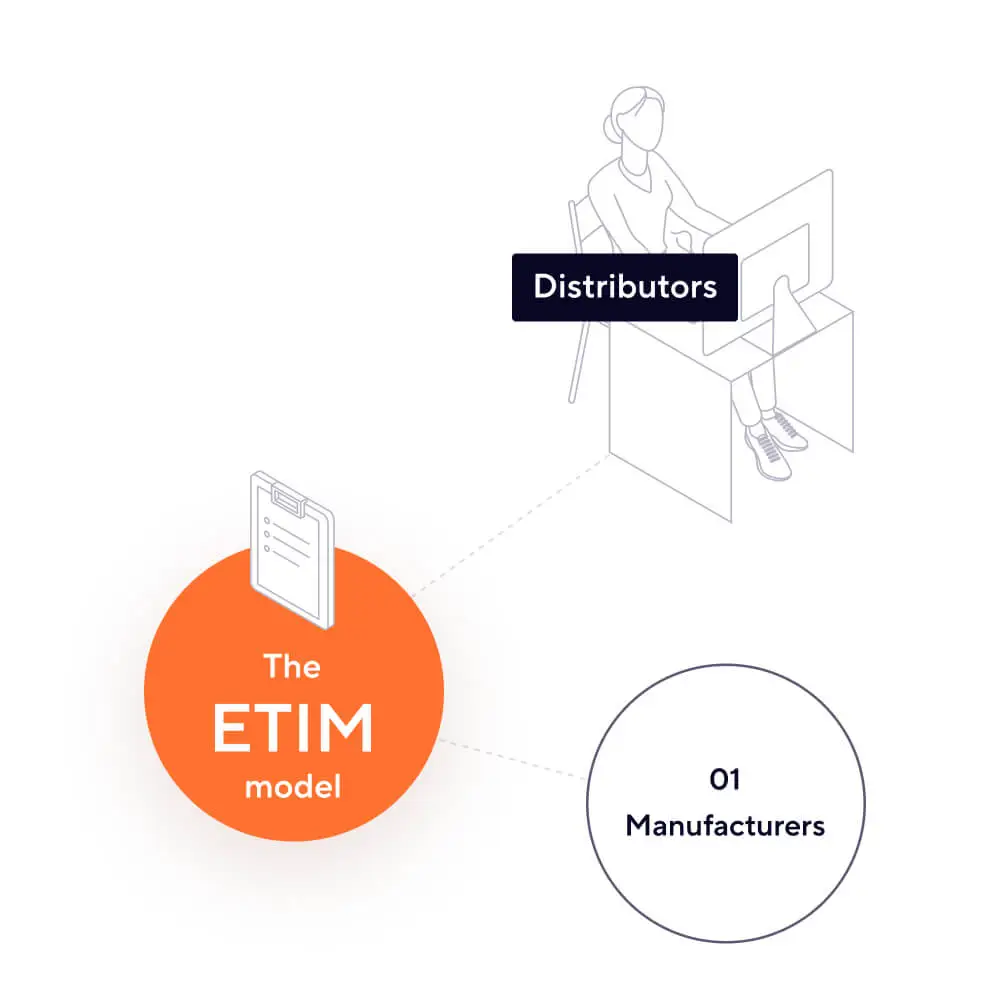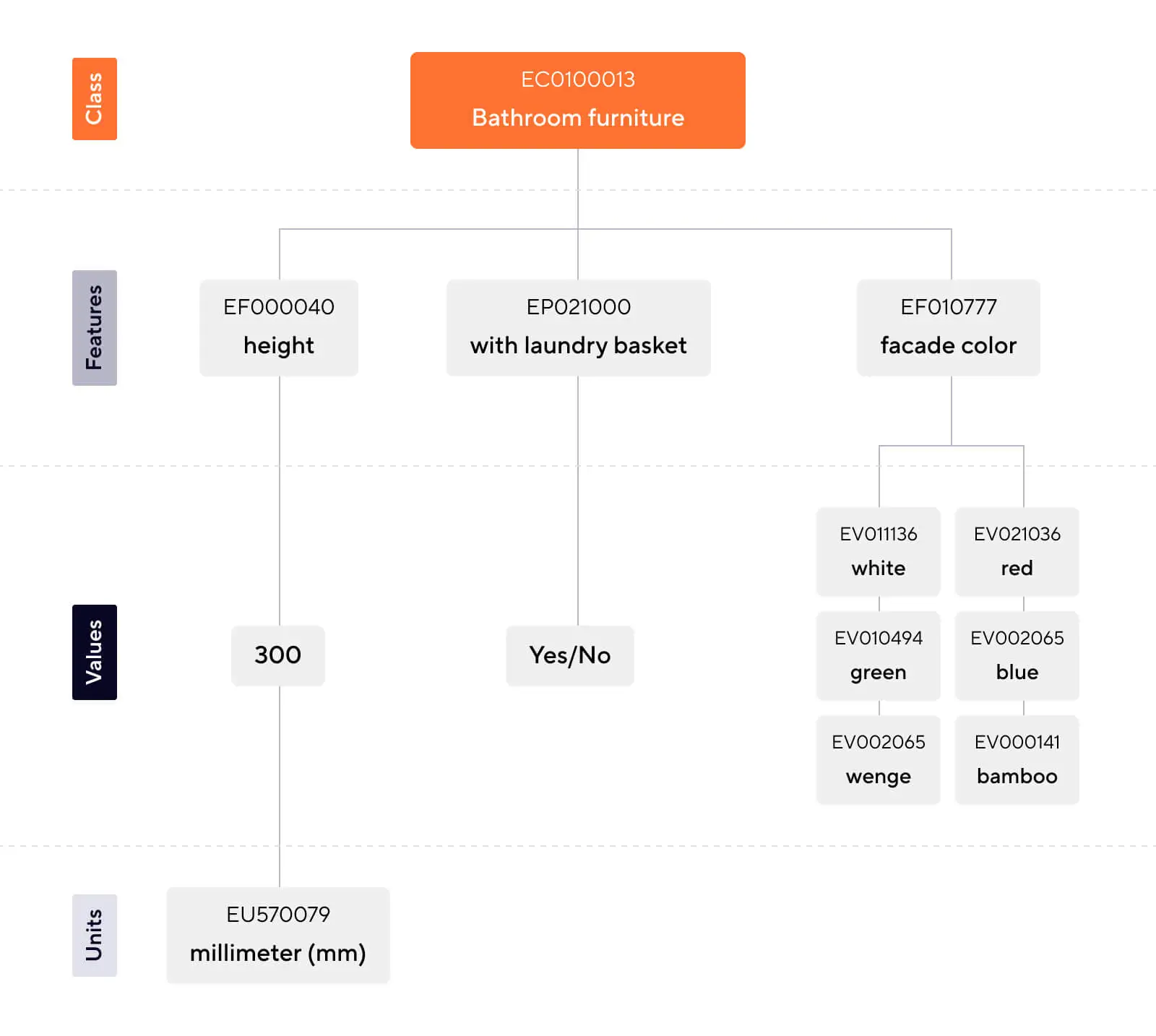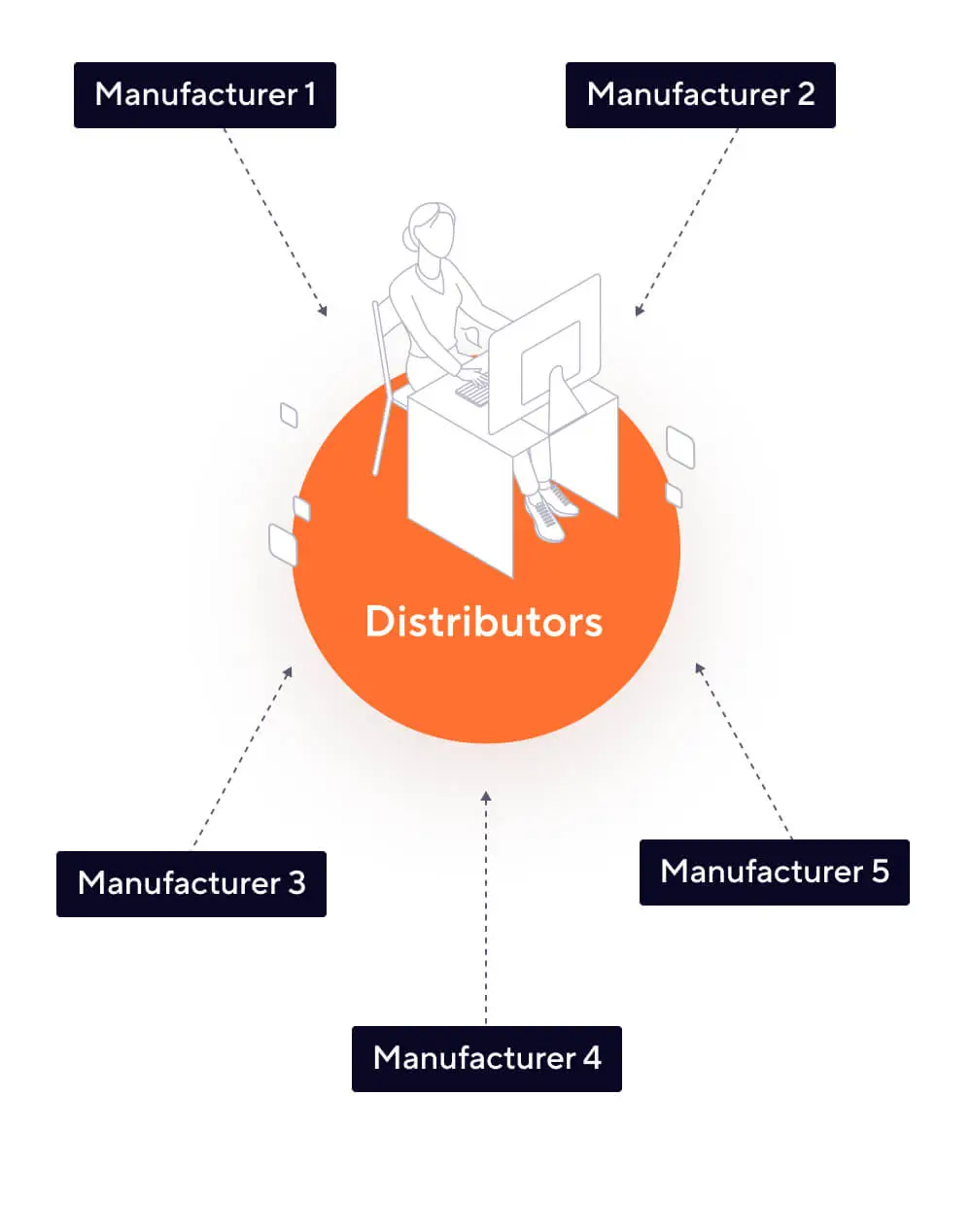What is the ETIM standard and what is its purpose?

Producing high-quality data is a major challenge for the construction sector, as end customers increasingly demand greater transparency.
The ETIM (Electro-Technical Information Model) international standard was developed to classify the technical data of building supply products. It ensures that the FAB-DIS data exchange format operates efficiently.
What is ETIM?
ETIM, short for Electro-Technical Information Model, is an international classification system for technical product data, also referred to as “rich data,” specifically used for building sector products, such as electrical equipment and HVAC systems.
This model structures and organizes technical product data, enabling the precise and consistent description of any product through standardized characteristics and attributes. As a result, products are uniformly described across manufacturers, platforms, and languages, improving clarity and consistency.
Manufacturers can integrate ETIM-compliant data into their Product Information Management (PIM) systems, while distributors benefit from improved product visibility across various channels, including e-commerce websites, retail stores, catalogs, and mobile applications.
A bit of history
The ETIM classification standard was developed to structure the flow of information between professionals, manufacturers, and distributors in the construction sector. ETIM was created to meet the growing demand for clear and structured product information within the construction industry.
Initially, the ETIM model was used by manufacturers and distributors in the electrotechnical sector, but it quickly expanded to other fields and countries around the world.
A regularly updated model
Today, this classification model (or taxonomy) is available in 17 languages and is promoted by 20 member organizations representing 21 countries. The model is regularly updated to remain relevant.
International versions of ETIM are released every two years. The current version, ETIM V8.0, has been available to members since March 2021 in its French edition. The next version, ETIM V9.0, is in preparation and will be released by the end of 2022. It is essential for manufacturers to keep their product data updated to comply with these new versions.
There is also a dynamic version of the model, which allows real-time integration of any modifications or updates.
Need a custom solution?
Request your personalized audit now
What is a data exchange format?
Previously, distributors did not require specific data formats from their suppliers or manufacturers when receiving product data. This led to inconsistent data formats that were hard to manage.
Some suppliers provided detailed and complete data, while others submitted incomplete and poorly structured files, making it difficult for distributors to use the information effectively.
To address this issue, standardized data exchange formats were introduced, enabling suppliers and distributors to speak the same language. Different industries have developed their own specific formats to meet their unique needs.
Increasingly, distributors are now requiring standardized and unified formats from their suppliers to streamline data management.

Adopting FAB-DIS improves productivity by eliminating the time-consuming management of multiple proprietary formats.
No special support or investment is required.
Key benefit: up to 40% time saved during your product referencing operations. FAB-DIS allows companies to focus on data enrichment and quality, rather than duplication.
By default, the FAB-DIS file is manually completed. Galilée integrates the ETIM model into the marketing production platforms it deploys for its clients, particularly in PIM (Product Information Management) solutions.
Once this data is entered into the PIM solution, it is then automatically reused for various formats and needs. This data can be imported into marketplaces, e-commerce sites, and more.
A PIM (Product Information Management) system facilitates data enrichment and maintenance through a user-friendly interface and an adapted data model. For manufacturers and distributors wishing to use the ETIM model, it is preferable to adopt a PIM solution.
What business challenges does ETIM address?
The business challenges related to the use of a standardized and unified data format such as ETIM are numerous:
- Increase in electronic exchanges for various needs (marketing, logistics, etc.)
- Demand for transparency from customers
- Increasing need for online product comparisons by end customers
- Shorter product life cycles
- Production of precise, up-to-date, high-quality product sheets
- Need to enhance offers with enriched content and media
- Providing reliable and consistent information throughout the customer journey (multichannel strategy: e-commerce, marketplaces, physical sales, etc.)
- Reducing time-to-market
- Optimizing product sales across all channels

How does the ETIM model work?
The ETIM data model is built through the codification of a set of technical data. It is based on different levels of product-related categories.
The ETIM model includes two classification levels:
- Product group
- Product class
Each product class is assigned to a unique product group. The group level exists solely to facilitate the management of product classes.
The ETIM model also includes the following entities:
- Characteristic
- Value
- Unit
- Synonym

Product class
In the ETIM model, a product class describes similar products, including sets of products from different manufacturers or suppliers. Each product class is associated with specific technical characteristics used to describe the products within that class.
The characteristics of each class are structured according to their importance and key aspects (e.g., dimensions, electrical specifications).
ETIM currently contains nearly 6,000 product classes, covering diverse sectors such as:
- Electrical
- Sanitary, heating, and ventilation
- Construction
- Tools
Other sectors can be integrated into ETIM upon request from members.
Characteristics
A characteristic is clearly illustrated by a description, a characteristic type, a unit, and/or a value.
Types of characteristics:
- A for alphanumeric: A list of possible values (e.g., red, green, long, short, etc.)
- L for logical: Closed questions with yes/no answers (also called Boolean logic, true/false)
- N for numeric: A simple numeric value
- R for range: Two numeric values defining a range
Value
Each characteristic within a class has a predetermined list of possible values, presented in alphabetical order.
Unit
A unit refers to the unit of measurement defining the expected value for numeric and range characteristics.
Synonym
A synonym (or keyword) provides an alternative description of a product class. A synonym can refer to multiple product classes, and a product class can have multiple synonyms.
Benefits of ETIM for industrial manufacturers
For industrial manufacturers, ETIM adds value to products by using objective and standardized technical criteria, such as normative characteristics included in commercial documentation, features commonly requested by installers, and characteristics compliant with major French and European certifications.
Benefits of ETIM for distributors
For distributors, the ETIM model provides structured data to populate their systems and automate processes such as internal classification, content management or master data management (MDM), and the creation of print and digital communication materials. It also simplifies the implementation of filters and search functions on applications and e-commerce platforms.

ETIM model: Which industries use it?
The ETIM classification model is widely used across various building-related product sectors.
In the coming years, additional industries and product groups are expected to be integrated into the ETIM model.
The model was designed for professional use by installers, integrators, distributors, and manufacturers, specifically for B2B (business-to-business) products.
Industries currently using ETIM include:
- Electrotechnical
- Sanitary and heating
- Ventilation and air conditioning
- Plumbing
- Building materials
- Tools
What data does ETIM manage?
The data required in the ETIM tab of the FAB-DIS file includes:
- Brand name
- Commercial reference (manufacturer-specific product ID or unique non-standardized identifier)
- ETIM product class ID number
- ETIM characteristics, which have unique numbers and are translated into codes (alphanumeric lists, numeric values, ranges, or yes/no logic)
- ETIM model version
Unlike a database, the ETIM model does not manage brand names or commercial references for manufacturers. Instead, there is a mandatory link between the commercial reference and the ETIM class, which enables the assignment of the relevant characteristics and values within each class.
It is the manufacturer’s responsibility to create this association (mapping) before distributing product information to their distributors. This mapping is essential for ensuring that product data can be exchanged through FAB-DIS or another format.
The commercial reference serves as the key link to connect other data in the FAB-DIS file.
What are the advantages and benefits of ETIM?
Improved product visibility
Products become more visible in catalogs and marketplaces.
Better communication support
The model provides structured data for distributors, making it easier to populate communication materials.
More efficient communication
ETIM improves data exchanges with all business partners.
Advanced functionalities
ETIM enables the use of advanced tools, such as Easy-Check GOLD by FAB-DIS, a solution designed to simplify the creation of manufacturer files and ensure their compliance for distributors.
Process optimization
By adopting ETIM, companies can save time and resources through streamlined processes.
Better product indexing
Products are better indexed on distributor e-commerce websites, making them easier to find for customers.
Increased customer satisfaction
Customers can easily find the products they need, leading to higher satisfaction rates.
Significant cost savings
Companies can achieve major savings through optimized purchasing, stock management, and distribution by grouping large orders and streamlining their product portfolios.
Reduced risk of errors
The ETIM model ensures error reduction by using a common language that all partners can understand.
Up-to-date product data
The model ensures that product data remains complete and accurate throughout the entire supply chain.
More reliable exchanges
ETIM helps streamline data exchanges and optimize online sales on e-commerce platforms.
Improved strategic decision-making
By using harmonized data, companies can make better strategic decisions, based on reliable information shared with customers and partners.
ETIM in numbers
- Year of creation: 1991
- Implementation in France: 2013
- New version released every: 3 years
- Current version: 8.0
- Product classes: 5,415
- ETIM characteristics: 22,698
- ETIM values: 25,000
- Countries where ETIM is available: 18
- Languages supported: 22
- ETIM France members: 90 (including 69 manufacturers, 14 distributors, and 7 partner members such as PIM solution providers)


